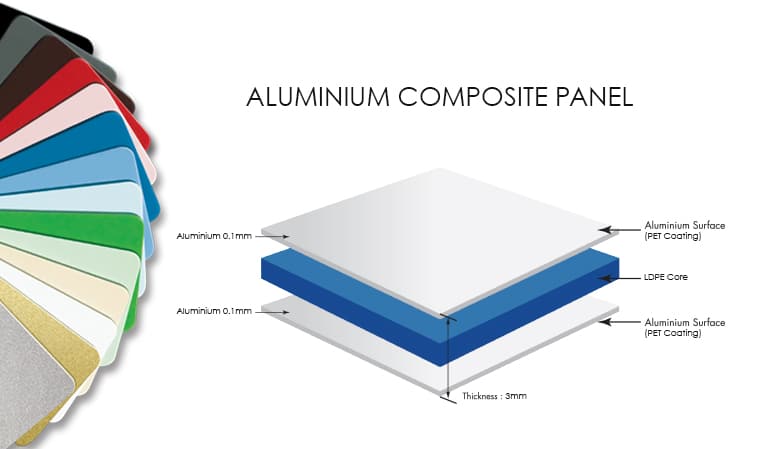Aluminium composite panels (ACPs) are made by sandwiching a core material, usually polyethylene, between two thin layers of aluminum sheets.
The process of making ACPs involves several steps:
-
Preparing the Aluminum Sheets: The aluminum sheets used in ACPs are typically thin, ranging from 0.2 to 0.5 millimeters in thickness. They are cut to the desired size and pre-treated to remove any oils or contaminants that may affect the bond between the aluminum and the core material.
-
Mixing the Core Material: The core material, typically polyethylene, is mixed and melted to produce a homogeneous mixture. The mixture is then cooled and cut into sheets of the desired thickness.
-
Lamination: The aluminum sheets and core material are then placed into a lamination machine. The machine applies heat and pressure to bond the layers together, forming a strong and rigid composite panel. The process is usually carried out under controlled conditions to ensure consistent quality and a strong bond.
-
Quality Control: After the lamination process, the ACPs are subjected to a series of quality control checks to ensure that they meet the required standards. This may include checks for uniformity, thickness, and surface quality.
-
Coating: Some ACPs may be coated with a protective layer, such as a PVDF (polyvinylidene fluoride) coating, to improve their resistance to weathering and UV exposure. This step is optional and depends on the intended end-use of the panels.
-
Cutting and Packaging: After quality control checks, the ACPs are cut to the desired size and packaged for transportation and storage.
In conclusion, the process of making aluminium composite panels involves preparing the aluminum sheets, mixing the core material, laminating the sheets and core material, quality control checks, and cutting and packaging the panels. The result is a strong and durable composite panel that can be used for a variety of applications, including cladding, signage, and interior decoration.

